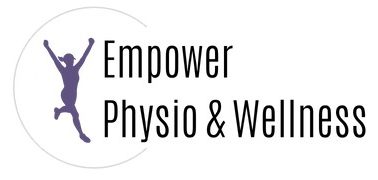Most of us like to think we know ourselves fairly well—we know we’re happy when the sun is shining when we drink a good cup of coffee, or when we spend time with our loved ones. On the other hand, we also know when we’re sad. We may have lost our favorite sneakers, hit a pothole, or experienced emotional trauma. All of that seems, in many ways, quite clear to us. But when it comes to physical injuries, things can get a bit confusing. How do we know if we have neck pain, shoulder, or back pain? How can we identify different types of pain? It often seems as if it’s harder to self-diagnose physical pain than it is to pinpoint heartache or joy. In this post, I’ll cover how we can tell if we’re really injured and where the pain is coming from.
As I mentioned, identifying types of pain is key in relieving it – treating your elbow, for example, may do no good if it is actually your wrist giving you the trouble. And just to make things even more confusing, your pain might not even point to an injury in the first place! That’s right! Oftentimes, we may experience pain that is fleeting and disappears on its own.
Understanding the difference between a one-off pain and a chronic, debilitating type of pain is absolutely crucial. Why? Well, if you don’t pay attention to the pain and it actually points to an injury, then you might end up hurting yourself even more. Ultimately, we need to find out if the reason for pain is a fleeting injury or not. After this, it’s time to treat it appropriately. Let’s start with the first point: knowing the difference between injury and temporary pain.
When it comes to identifying types of pain, listening to your body is the first port of call. Your body is a sophisticated organism. Its ability to signal injury in the form of discomfort and pain cannot be underestimated. Sensation is like your body’s language, and pain is like a warning that signals a problem. If we listen carefully enough, our bodies will inform us of our ailments. So, when it comes to knowing if we’re injured or not, we have to listen.
Look out for any signs of injury like swelling, discoloration, temperature spikes, trouble walking and sensitivity to touch. A tip for you: if you suspect that you’ve been injured, apply heat/ice immediately. More often than not, inflammation accompanies pain. Heat and ice are able to alleviate the discomfort and swelling. Be sure to be smart, though. If you feel pain for long durations of time, something is definitely wrong. Don’t make the mistake of believing your pain will disappear on its own. Listen to your body and make a decision to get the right kind of help.
Once you’ve identified that you’re injured, it’s time to figure out exactly what type of injury you’ve sustained. Establishing if you’ve pulled, strained, or torn a muscle can be as difficult as solving a Rubix cube! One way to get to the bottom of it is to analyze the types of activities you’ve done. Crossfit can give rise to different injuries than yoga, for example. While this is an inexact science, it is one way to pin-point your injury. At the end of the day, it’s always best to see a professional physical therapist to establish the exact cause and what kind of treatment you need.
Visiting a professional, hands-on physical therapist is by far the safest, fastest, and most effective way of both diagnosing and treating the root cause of your pain. Not only will a physical therapist relieve the discomfort, but they’ll give you the tools to maintain a pain-free life. Tailor-made exercises accompanied by treatment will hone in on your specific injury and get you back to the activities you love.
At the end of the day, understanding injuries and pain can be tricky. It may seem impossible to identify either the cause of the pain or its location, but one thing is certain: it cannot be ignored. Listen to your body and make a decision to get the help you need. Take action. Analyze your activities, stop doing those that you think may be detrimental, and get professional help. If you’re unsure of why you’re in pain, where you’re in pain, or if even if you’ve injured yourself during an activity you love, let’s chat!



